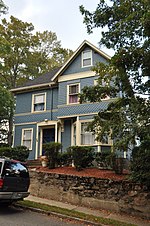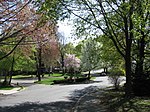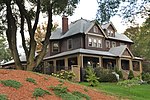Charles Winship House

The Charles Winship House was a historic house located at 13 Mansion Road and 10 Mansion Road in Wakefield, Massachusetts. The 2+1⁄2-story mansion (for which the road is named) was built between 1901 and 1906 for Charles Winship, proprietor (along with Elizabeth Boit) of the Harvard Knitting Mills, a major business presence in Wakefield from the 1880s to the 1940s. It was the town's most elaborate Colonial Revival building, featuring a flared hip roof with a balustrade on top, and a two-story portico in front with composite capitals atop fluted columns.The house was listed on the National Register of Historic Places in 1989.The architect of the house was the Boston-based firm Hartwell & Richardson. The ornate interior was designed by the firm Irving and Casson – A. H. Davenport Co.. Both firms were famous for their meticulous design as well as high quality of workmanship and materials. During The Winship House's construction in 1902, Irving and Casson – A. H. Davenport Co. was commissioned for work on the White House renovation.
Excerpt from the Wikipedia article Charles Winship House (License: CC BY-SA 3.0, Authors, Images).Charles Winship House
Mansion Road,
Geographical coordinates (GPS) Address Nearby Places Show on map
Geographical coordinates (GPS)
| Latitude | Longitude |
|---|---|
| N 42.4975 ° | E -71.086111111111 ° |
Address
Mansion Road 10
01880
Massachusetts, United States
Open on Google Maps










